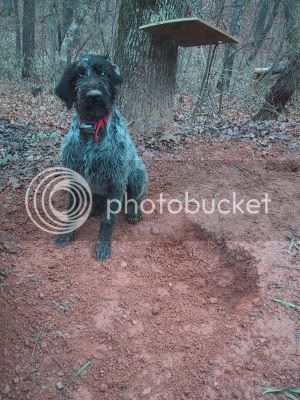I know the bowhunting Association teaches blood trailing. So what? They are wrong, too. As to the tip I gave you, don't use it if you think I am wrong. Its no skin off my nose. I have only been a tracker for more than 50 years, and have lost count on the number of deer I have tracked that dropped blood every four feet or so when walking. I was sceptical about it when a friend first told me, and then showed me when we were tracking a deer together, so I can understand your scepticism, too. I just told you how to tell one deer from another. If you want to continue to have trouble following deer, and aren't interested in learning how to do it better, that is your problem, not mine. I bothered to write you about this for both your benefit, and for the benefit of other readers. I don't like tracking liver shot deer, either. But the blood is very dark, almost black, when you do find it, and no deer survives a hit to the liver. If you don't push them, such a deer will find a cold shaded spot to lie down in, and if left alone, will die there in its bed. Wounded deer respond to the high fever that occurs when they are filled with adrenalin. To get cool again, they look for water, mudd, and cool dark places to bed down.
Oh, you can determine eye dominance from the way the tracks appear, also. Because deer are prey species their eyes are on the sides of their head, and they do not have binocular vision like man has. To look forward, a deer has to turn his head to one side or the other. Being a mammal, a deer has a dominant side, and eye, just like us. To look forward, he will turn his head so that his dominant eye looks forward. That shifts his weight forward on that side front foot. and the front foot will step just a little " long " in comparison to the non-dominant front foot. A right eye dominant Buck will leave tracks that show a doubling to the front edge of the impression, and to the outside of the impression, the clear imprint being made by the rear foot stepping almost on the track left by the front foot.
Eye dominance will tell you which trail to look for that next blood spot you prefer to follow, when the trail comes to a fork. All things being equal, the deer will take the fork on the dominant side of his body. One exception will be if by going the other way he reaches water sooner, or a dark shaded cool place that is secluded enough that he can't be seen by a pursuer( think wolves, or other dogs), while he lays up and tries to stop the bleeding.
I have tracked wounded deer with a couple of experienced Bowhunting Association trained Blood trackers who left the woods full of toilet paper which they placed on every blood spot. They never once looked back to see what the toilet paper trail was telling them about the eye dominance of the deer! If they had, they would have clearly seen that the deer was constantly going to the Right, which I told the property owner, and the shooter within a couple of minutes examining the tracks when we began. The owner was the host for the hunt, and was a retired Dep. Sheriff. He had wanted to see how I tracked deer, so he stayed with me as I showed him how I did it, and showed him each succeeding track, all while our heroes were dropping TP all over the woods. It became a tortoise and the hare kind of " race", although I was not competing with them at all. They finally got discouraged after we passed three separate forks where the deer went Right, and they went Left, searching in wider arcs for blood, until I took pity on them and told them we had blood over on the trail we were following. They marched off, walking away from the trail to check a river crossing about 150 yds North of us, saying the deer probably crossed the river there. I already knew the deer was circling back towards where he was shot(South), but they were not in the mood to listen. The deer, unfortunately, made if off the farm, and into some thick pines on the neighbor's property, where we would have had to crawled on our bellies to follow it. And, we didn't have permission to trespass or hunt there. The deer bedded down for awhile before leaving our property, and the location of the blood at the bed told me the slug had grazed the deer across the chest, and that the wound was clotting nicely.
If you think you can find more deer blood trailing, than I can tracking, my hat is off to you. However, what do you do when the blood trail stops? Or you don't have any blood to follow?





